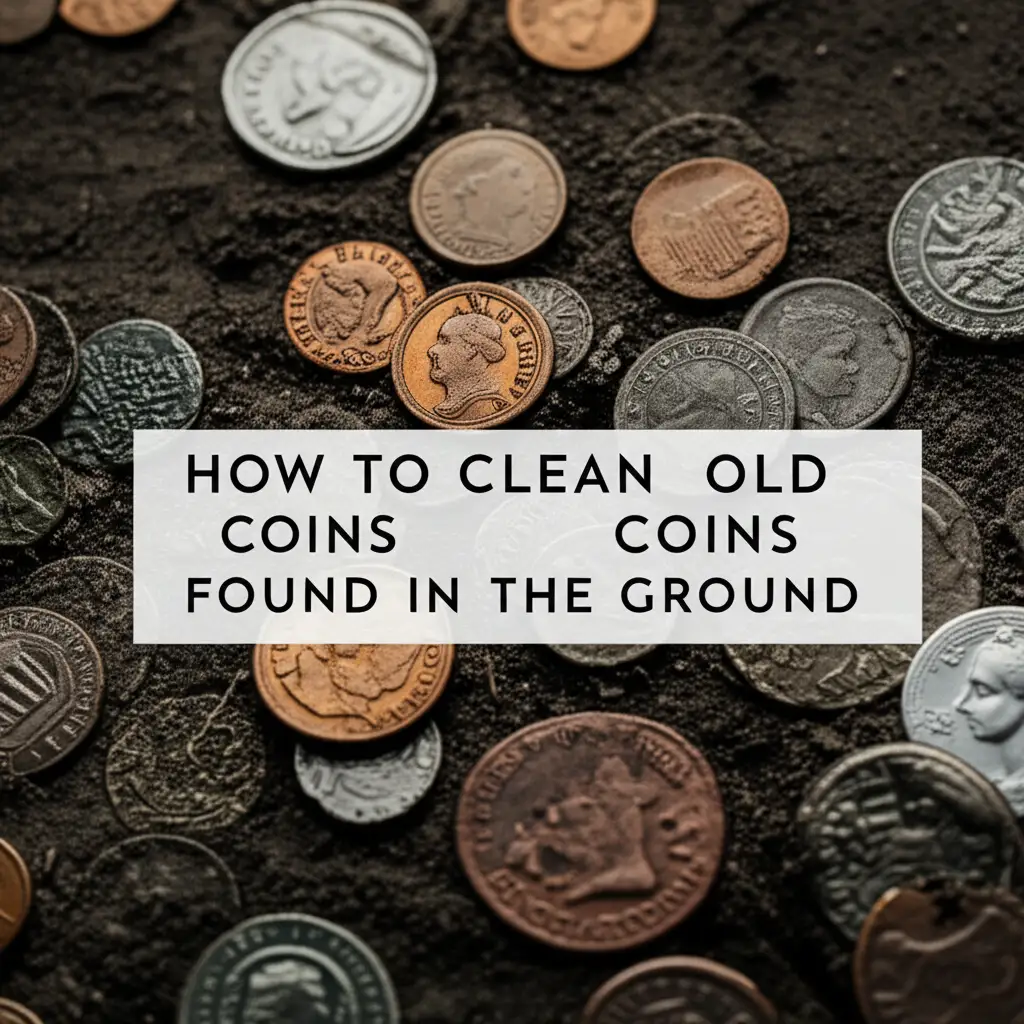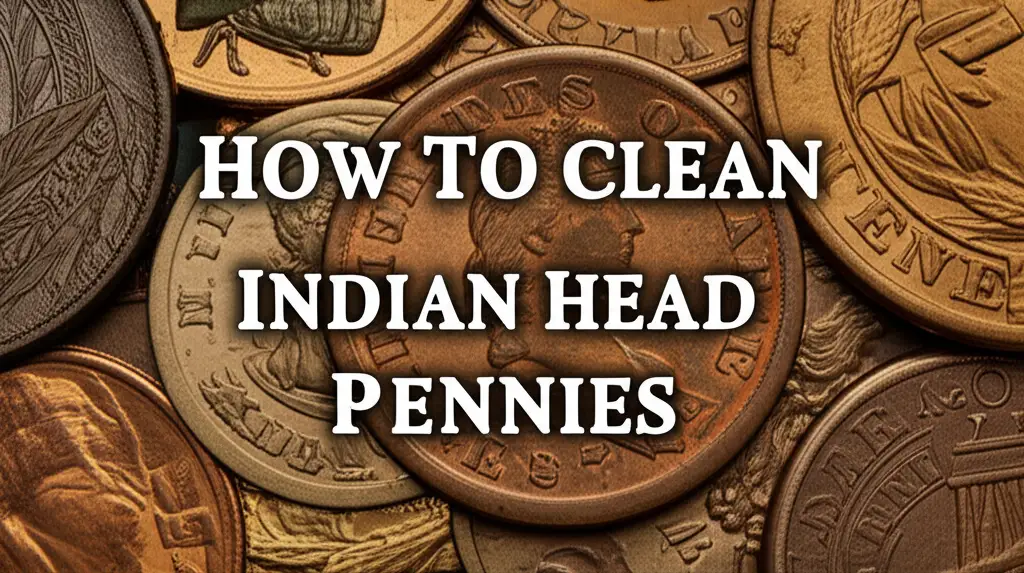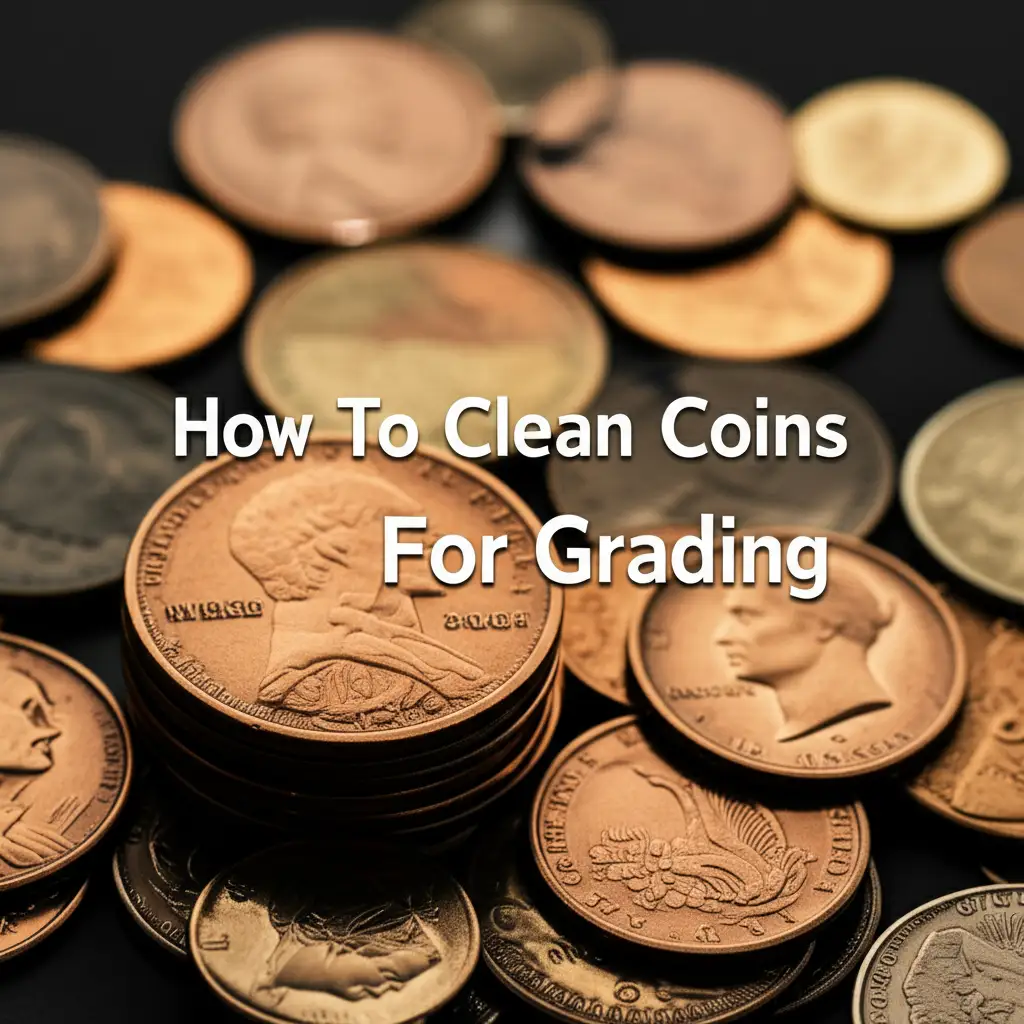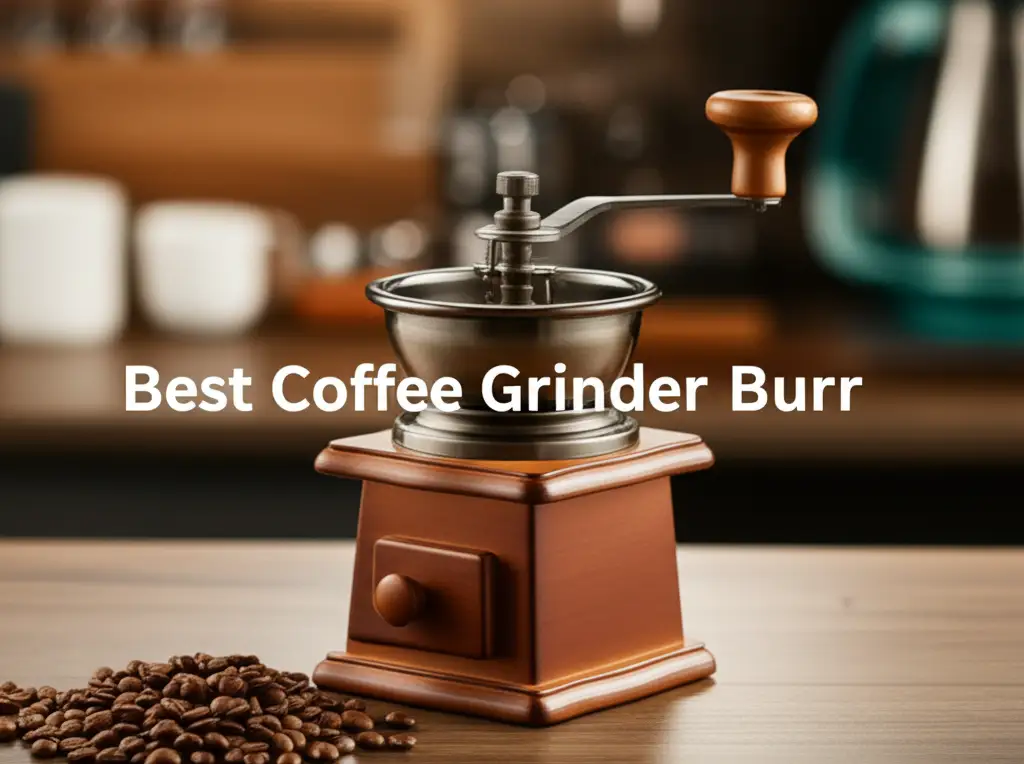· Valuable Item Care · 12 min read
How To Clean Old Coins Found In The Ground

Cleaning Old Coins Found In The Ground: A Guide
Imagine the thrill of unearthing a piece of history. You are metal detecting, and suddenly, your detector signals a find. You dig, and there it is: an old coin, caked in dirt from years in the ground. What do you do next? The immediate urge is to clean it, to see its details. However, cleaning old coins found in the ground requires extreme care. An improper cleaning method can drastically reduce a coin’s historical and monetary value. My goal is to guide you through the safest practices for handling these delicate artifacts. I will cover the critical steps from initial assessment to gentle cleaning techniques and proper storage. You will learn what tools to use, what mistakes to avoid, and when to seek professional help. This article ensures your valuable finds remain preserved for years to come.
Takeaway:
- Assess the coin’s potential value before any cleaning attempt.
- Prioritize preservation of the coin’s natural state and patina.
- Always use the gentlest cleaning methods, starting with distilled water.
- Avoid abrasive materials, harsh chemicals, and aggressive rubbing.
- Proper storage after cleaning is crucial for long-term preservation.
How do you clean old coins found in the ground?
Clean old coins found in the ground by starting with a careful assessment. Use only gentle methods like soaking in distilled water. Remove loose dirt with a soft brush. Avoid all harsh chemicals, abrasive tools, or vigorous rubbing. The goal is preservation, not a shiny, new appearance.
Understanding Old Coins: Preservation Over Aggressive Cleaning
When you find an old coin, your first thought might be to make it shiny again. This is a common mistake. The true value of many old coins, especially those with historical significance, lies in their original state. This includes the dirt they acquired over time and the natural oxidation called patina. Patina forms a protective layer on the coin’s surface. It can tell a story about the coin’s age and environment.
Aggressive cleaning removes this patina. It can scratch the coin’s surface or change its color. This damage is irreversible. A coin that looks “clean” but is damaged loses much of its numismatic value. Numismatic value refers to the value a coin holds for collectors, beyond its face value. Professional coin collectors and appraisers prefer coins with intact patina. They see it as proof of authenticity and age. Always prioritize preservation over aggressive restoration when you discover these historical artifacts.
Essential Tools and Gentle Preparations for Coin Cleaning
You need the right tools before you start any cleaning. Your approach must be gentle. Start by setting up a clean, well-lit workspace. This helps you see the coin clearly and prevents accidents. A magnifying glass is vital for close inspection. It lets you examine the coin’s surface and the dirt on it.
Your primary cleaning agents should be non-abrasive. Distilled water is your best friend. Tap water often contains minerals and chlorine that can harm coins. Soft brushes, such as a camel hair artist’s brush or a very soft toothbrush, are useful. Use them for gently removing loose dirt. Wooden toothpicks are also excellent. They can dislodge stubborn dirt without scratching the metal. Cotton swabs provide a gentle way to apply water or blot surfaces. Avoid metal tools or anything that could scratch the coin’s surface. Your initial goal is to remove only the loose soil, not to scour the coin.
Safe Cleaning Methods for Dirt-Encased Coins
Cleaning dirt from old coins needs patience and a gentle touch. Start with a simple distilled water soak. Place the coin in a small container. Fill it with distilled water. Let the coin soak for several days, or even a week, changing the water daily. This process softens the dirt. Do not rush this step.
After soaking, take the coin out. Use a soft brush to gently wipe away loosened dirt under distilled water. If dirt remains, soak it again. For very stubborn dirt, a wooden toothpick can carefully dislodge particles. Always work slowly. Do not apply much pressure. Avoid scrubbing. You want to preserve the coin’s details and natural surface. Remember, the aim is to reveal the coin, not to make it gleam. Using harsh chemicals or household cleaners will damage your coin. For example, methods used to clean crud off a cast iron skillet are too aggressive for delicate coins. Coin cleaning requires much more restraint.
Step-by-Step Gentle Cleaning
- Initial Soak: Place the coin in a small glass or plastic container. Cover it completely with distilled water.
- Patience is Key: Let the coin soak for 24 hours to several days. Change the distilled water every day. This helps draw out salts and loosen dirt gradually.
- Gentle Scrubbing (Optional): After soaking, if dirt remains, remove the coin. Under a gentle stream of distilled water, use a soft artist’s brush. Lightly brush the surface to remove any loosened grime.
- Persistent Dirt: For very stubborn dirt, try a wooden toothpick. Carefully pick away at the dirt, avoiding the coin’s surface itself. Do not use metal tools.
- Repeat Soaks: If the coin is still heavily encrusted, repeat the soaking process. Multiple long soaks are better than one aggressive cleaning session.
Advanced Techniques and When to Consider Them (Caution Advised)
Some situations might tempt you to try more advanced cleaning methods. These methods carry significant risks. They are generally not recommended for valuable coins. One debated method is an olive oil soak. This method is mainly for copper or bronze coins. You submerge the coin in extra virgin olive oil for weeks or even months. The oil slowly works to loosen dirt and corrosion. This process is extremely slow. It can also discolor the coin. This method does not suit silver or gold coins. It is a last resort for heavily encrusted copper coins.
Electrolysis is another method. It uses an electric current to remove corrosion. This method is highly destructive. It can strip a coin bare, removing all patina and fine details. It is never recommended for coins with numismatic value. This method is for archaeological specimens where appearance is less important than material recovery. If you have a potentially valuable coin, always consult a professional conservator. They use specialized techniques. These techniques focus on stabilizing and preserving the coin, not just cleaning it. They understand the delicate balance of preserving historical integrity. Just like cleaning tough stains from a metal object, such as when you clean crud off a cast iron skillet, there are specific methods. However, a coin’s delicate surface means those methods are far too abrasive.
Common Mistakes to Avoid When Cleaning Old Coins
Many common cleaning methods are disastrous for old coins. Avoid them at all costs. Never use abrasive materials. This includes steel wool, harsh brushes, or even rough cloths. These materials will scratch the coin’s surface. This removes details and reduces value. Polishing coins is another critical mistake. Polishing removes the coin’s original surface and its valuable patina. It leaves the coin looking shiny but artificially altered.
Chemical cleaners are also extremely dangerous. Household cleaners like vinegar, baking soda pastes, lemon juice, or commercial metal polishes are highly corrosive. They can etch the coin’s surface, change its color, or create pitting. For instance, while methods for cleaning a dishwasher with vinegar and baking soda are effective for appliances, these same agents will destroy a coin’s surface and value. Acids can dissolve metal or strip away desirable patina. Even ultrasonic cleaners, which seem gentle, can cause tiny vibrations that dislodge metal particles and damage delicate surfaces. Avoid rubbing coins aggressively. This can wear down details and create artificial wear patterns. Remember, the less you do, the better for the coin’s long-term preservation.
Harmful Substances and Practices
- Abrasives: Steel wool, sandpaper, rough cloths, stiff brushes. These will scratch and wear down the coin’s surface.
- Household Chemicals: Vinegar, lemon juice, baking soda (especially as a paste), bleach, ammonia. These are corrosive and will pit or discolor the metal, destroying the patina.
- Commercial Cleaners/Polishes: Products designed for modern silver or brass are far too aggressive for old coins. They strip the surface and leave an unnatural shine.
- Ultrasonic Cleaners: While they use sound waves, the vibrations can still cause microscopic damage or dislodge fragments from delicate coins.
- Boiling Water: Extreme temperature changes can stress the metal and alter its surface.
- Rubbing/Scrubbing: Aggressive physical contact causes wear and tear, removing details and leaving unnatural rub marks.
After Cleaning: Drying, Storage, and Preservation
Once you finish a gentle cleaning, proper drying is crucial. Do not rub the coin dry with a cloth. Instead, gently pat it with a very soft, lint-free cloth. Allow the coin to air dry completely on a soft surface. You can also use a fan to aid in faster drying. Ensure no moisture remains on the coin. Moisture can lead to new corrosion or spots.
Handling coins requires care. Always hold coins by their edges. This prevents oils from your skin from transferring to the coin’s surface. Skin oils can cause fingerprints and damage over time. Consider wearing cotton gloves when handling coins. Proper storage is equally important for long-term preservation. Store coins in archival-safe holders. These include Mylar (polyester) flips or inert plastic slabs. Avoid PVC (polyvinyl chloride) flips. PVC contains chemicals that leach out over time. They can severely damage coins. Store your collection in a stable environment. Keep it away from extreme temperature fluctuations or high humidity. A cool, dry place is ideal. This careful approach helps your cleaned finds remain stable for generations. Preventing future deterioration is as important as the initial cleaning. This dedicated care ensures your finds are preserved, much like carefully cleaning hard water stains on shower glass prevents permanent etching; careful storage prevents permanent coin damage.
When Not to Clean: Recognizing True Numismatic Value
The most important rule in coin cleaning is knowing when not to clean at all. Many old coins, especially those of significant historical or monetary value, should never be cleaned by an amateur. The dirt and patina on these coins are part of their history. They contribute to their authenticity and value. Removing them can destroy up to 90% of a coin’s worth. Rarity, historical significance, and original condition determine a coin’s value. A coin in its “as found” state often commands a higher price from collectors.
If you suspect your coin might be rare or valuable, resist the urge to clean it. Instead, take it to a professional numismatist or a reputable coin dealer. They have the expertise to appraise the coin. They can advise you on the best course of action for preservation. They may recommend professional conservation, which is different from cleaning. Conservation aims to stabilize the coin and prevent further deterioration without altering its historical integrity. It is always best to err on the side of caution. Do not risk ruining a historical treasure.
Frequently Asked Questions
Can I use vinegar to clean old coins found in the ground?
No, you should never use vinegar to clean old coins. Vinegar is an acid. It will react with the metal. This reaction can etch the coin’s surface. It can remove the natural patina and cause discoloration. This damage is permanent and significantly reduces the coin’s value. Stick to distilled water only.
Is it okay to rub old coins with a cloth?
You should not rub old coins vigorously with a cloth. Gentle patting with a soft, lint-free cloth is acceptable for drying. Rubbing, especially with abrasive cloths, can cause micro-scratches. It wears down the coin’s details. This can lead to an artificial shine and a reduction in value.
How do professionals clean old coins?
Professional coin conservators use highly specialized techniques. These methods differ greatly from typical cleaning. They might use microscopic tools, specific chemical compounds applied precisely, or even lasers. Their goal is conservation and stabilization, not making the coin look new. They focus on preventing further decay while preserving historical context.
Will cleaning an old coin reduce its value?
In almost all cases, cleaning an old coin will reduce its numismatic value. Collectors prefer coins in their original condition. This includes the natural dirt and patina. Cleaning often removes these elements. It can also cause irreversible surface damage. Only a professional conservator should clean a coin if it is truly necessary for its long-term preservation.
What is coin patina?
Coin patina is a natural layer that forms on a coin’s surface over time. It results from chemical reactions between the metal and its environment. Patina can be various colors, such as brown, green, or black. It acts as a protective layer. It is a sign of age and authenticity. Patina is highly valued by collectors.
How should I store coins after cleaning them?
After gentle cleaning and complete drying, store your coins in archival-safe holders. Use Mylar flips or non-PVC plastic slabs. Avoid soft PVC flips, which can damage coins over time. Store these holders in a cool, dry place. Keep them away from direct sunlight and extreme temperature changes. This helps prevent further deterioration.
Conclusion
Finding an old coin in the ground is an exciting experience. It connects you directly with history. Remember that the goal is always preservation when dealing with these artifacts. Aggressive cleaning methods can cause irreversible damage. They strip away valuable patina and reduce a coin’s historical and monetary worth. My advice centers on extreme caution and gentle techniques. Always begin with a simple distilled water soak. Use soft tools for dirt removal. Avoid all harsh chemicals, abrasive materials, and vigorous rubbing.
Prioritize understanding the coin’s potential value before attempting any cleaning. If you suspect your coin holds significant numismatic value, consult a professional. Proper drying and archival-safe storage are the final critical steps. By following these guidelines for cleaning old coins found in the ground, you help preserve these fascinating pieces of history for future generations. Treat each discovery with the respect and care it deserves. Your careful efforts will ensure its story continues.
- old coin cleaning
- coin preservation
- metal detecting finds
- antique coin care
- ground finds cleaning




